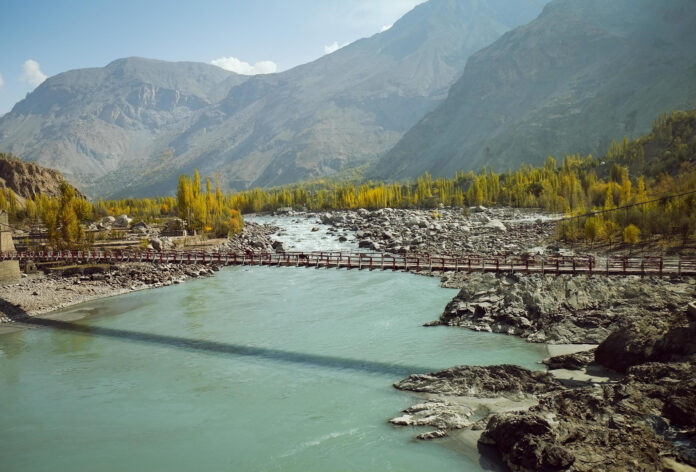In May 2022, reports began to emerge that the cotton crop in Sindh was wilting. In Sanghar, one of the largest cotton producing districts in Sindh with cotton grown on 300,000 acres of agricultural land, less than 200,000 acres were being used to cultivate cotton. And on the 200,000 acres that were being used to grow cotton, crop performance was abysmal.
Over the past 10 years, according to figures available with the Pakistan Cotton and Ginners Association, Pakistan’s cotton yields have fallen by 26% from 880 kg per hectare to 652 kg per hectare over the last decade. While the cotton crop in Sanghar suffered, other agricultural areas dependent on the down-river water from the Indus were affected as well. In Thatha, fishing villages were left without any source of livelihood as the nearly three kilometre stretch of river that crossed the region dried up completely and was replaced by huge deposits of sand. At the Kotri Barrage of the Indus in Sindh, water levels had fallen from 15,000 cusecs of water to barely over 2000 cusecs.
Figures from May this year showed that a major dip in the Indus of 10,000 cusecs (an outflow of 105,000 cusecs on May 19 and 95,000 on May 20) occurred at Tarbela dam, raising fears that the dam may have hit dead levels. Its inflows plunged to 77,900 cusecs on Friday from 98,000 cusecs on May 14. These flows are to be used Taunsa upstream in Punjab and in Sindh. The dam’s level stood at 1,406 feet on May 20 against 1,414 feet on May 16.
All of these are signs of the times. The content in this publication is expensive to produce. But unlike other journalistic outfits, business publications have to cover the very organizations that directly give them advertisements. Hence, this large source of revenue, which is the lifeblood of other media houses, is severely compromised on account of Profit’s no-compromise policy when it comes to our reporting. No wonder, Profit has lost multiple ad deals, worth tens of millions of rupees, due to stories that held big businesses to account. Hence, for our work to continue unfettered, it must be supported by discerning readers who know the value of quality business journalism, not just for the economy but for the society as a whole.To read the full article, subscribe and support independent business journalism in Pakistan










Thanks for the good information, I like it very much. Nothing is really impossible for you. your article is very good.
사설 카지노
j9korea.com